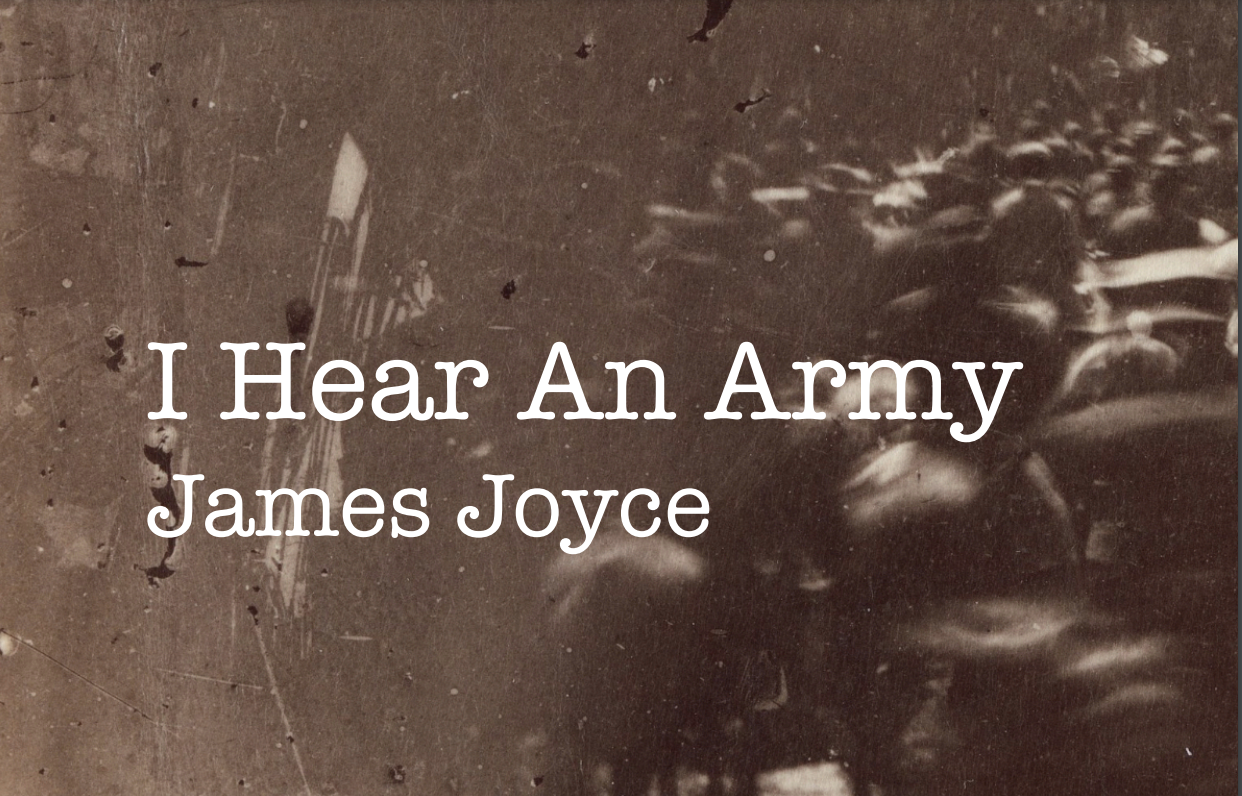Context for James Joyce’s ‘I Hear an Army’
James Joyce’s poem ‘I Hear an Army’ (1907) is a striking and intense piece that reflects themes of loneliness, betrayal, and existential turmoil. It was published in Chamber Music, a collection of Joyce’s early poetry. Unlike the musical and lyrical quality of many poems in the collection, ‘I Hear an Army’ is more dramatic and foreboding, filled with vivid imagery of a charging army and an overwhelming sense of despair.
If you’re looking for more support, click the ‘Learn More’ button below to view our complete Cambridge A Level Poetry teaching and revision pack:
James Joyce (1882-1941) was a modernist writer, known most for his novels such as Portrait of the Artist as a Young Man and Ulysses. His later works are often experimental with form and language - but this poem is an earlier example of his writing, and therefore more traditional.
The poem was published in 1907 as part of a collection entitled Chamber Music, when Joyce was 25 years old and a maturing writer. These poems were originally intended to be set to music, so they have a musical quality to their rhythm. He said of the collection: “When I wrote [Chamber Music], I was a lonely boy, walking about by myself at night and thinking that one day a girl would love me”.
Imagism - Joyce was a famous modernist writer, who sought to capture the sentiments and feelings of the early 20th century - it was a time of rapid progress and change, particularly in terms of technological development.
Imagistic poetry was originally developed by the poet Ezra Pound, and it formed in response to the development of cameras and film in the late 19th and early 20th centuries - imagism tries to capture specific sets of images within a poem to give them a ‘filmic’ or ‘photographic’ quality - here, Joyce uses precise sets of images, in line with the poetic tone of imagism.
Classicism - references to ‘charioteers’, and ‘the sea’, as well as the wider context of battle, recall epic Greek and Roman poetry, such as the Iliad and the Read - in this context, the ‘dream’ may also be interpreted as a prophetic vision, perhaps a nightmare that foreshadows the end of the speaker’s relationship - displaying their fears and anxieties about the future rather than the present reality.
Thanks for reading!
Struggling with your poetry?
Access video lessons + downloadable PDF study guides for each poem in the CAIE / Cambridge A Level Poetry Anthology for 2025. (Songs of Ourselves: Volume 2, Paper 2, Section B Poetry)
Each poem study guide covers the following topics:
THE POEM (COPYRIGHT PERMITTING)
VOCABULARY
STORY / SUMMARY
SPEAKER / VOICE
ATTITUDES /MESSAGES
LANGUAGE FEATURES
FORM / STRUCTURE
CONTEXT
THEMES AND IDEAS
POSSIBLE ESSAY QUESTIONS
EXTRA TASKS AND EXERCISES

